MARIANI’S
Virtual
Gourmet
November
25, 2018
NEWSLETTER
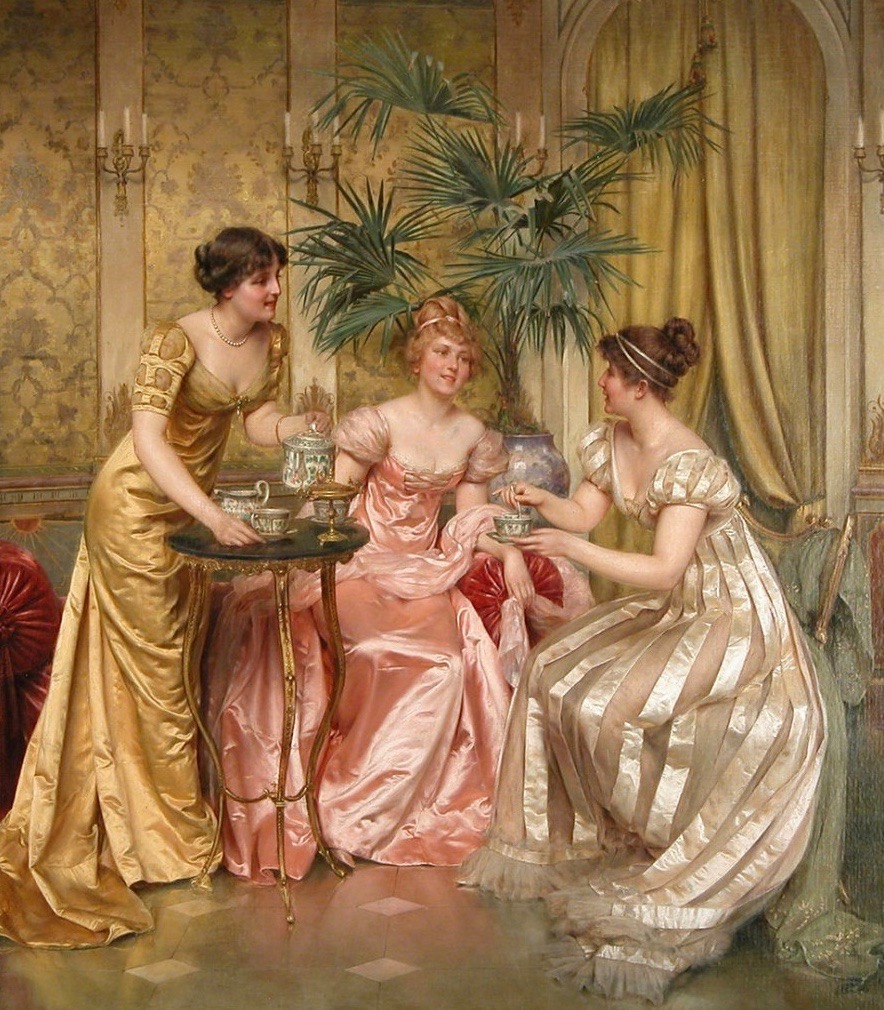
❖❖❖
IN THIS ISSUE
MADRID'S MODERN HOTELS
By John Mariani
NEW YORK CORNER
L'ATELIER DE JOËL ROBUCHON
By John Mariani
NOTES FROM THE WINE CELLAR
A RANGE OF BORDEAUX
By Geoff Kalish
❖❖❖
MADRID'S MODERN HOTELS
By John Mariani
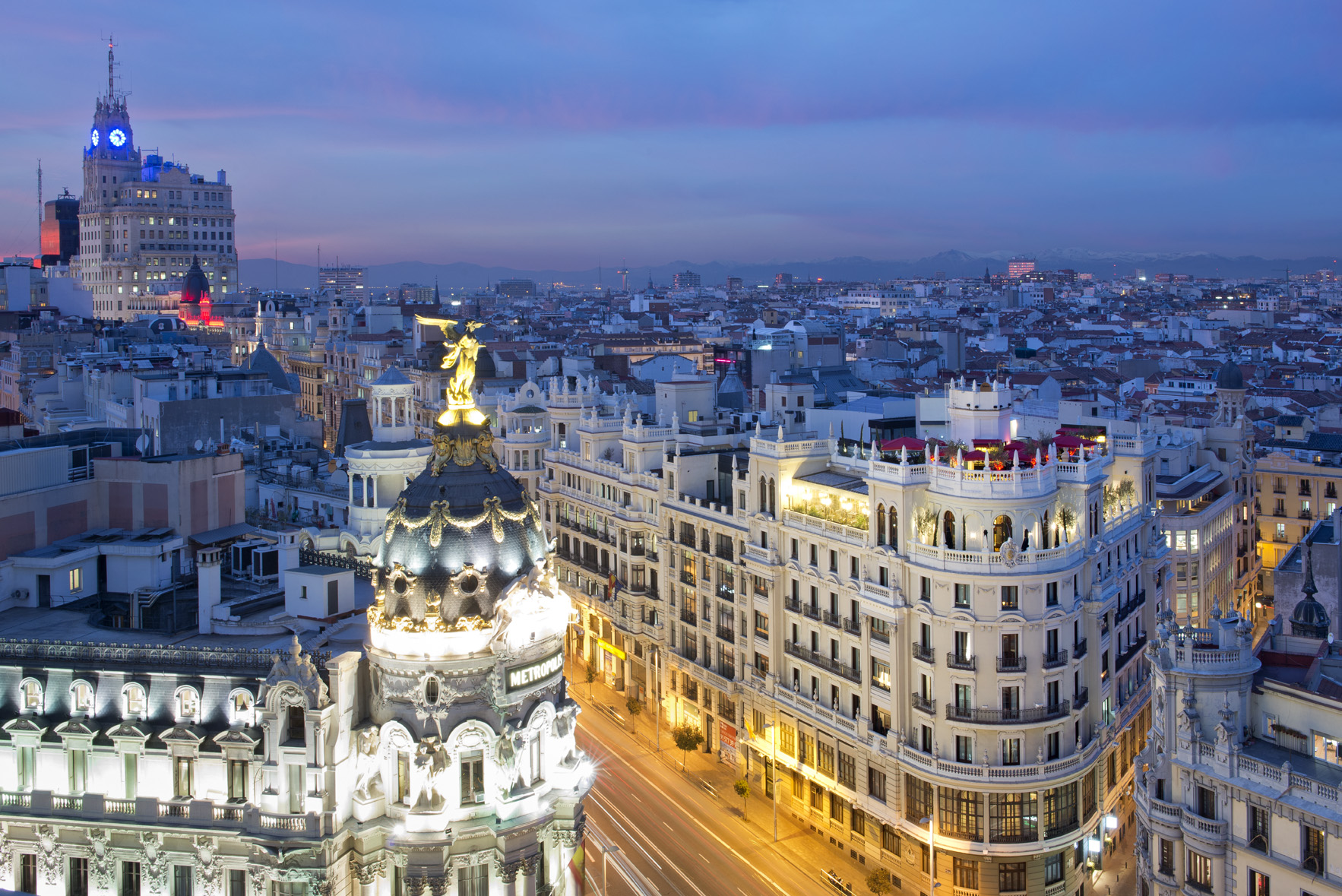
Metropole Building across from Hotel Principal
But the most recent
edition of the Guide
lists 30 hotels in its top category, many of
them just opened in the past few years. On my
trip to the city this fall I found three new
ones that are outstanding in their modernity,
comfort and design, easily competing with the
best new smaller hotels elsewhere in Europe.
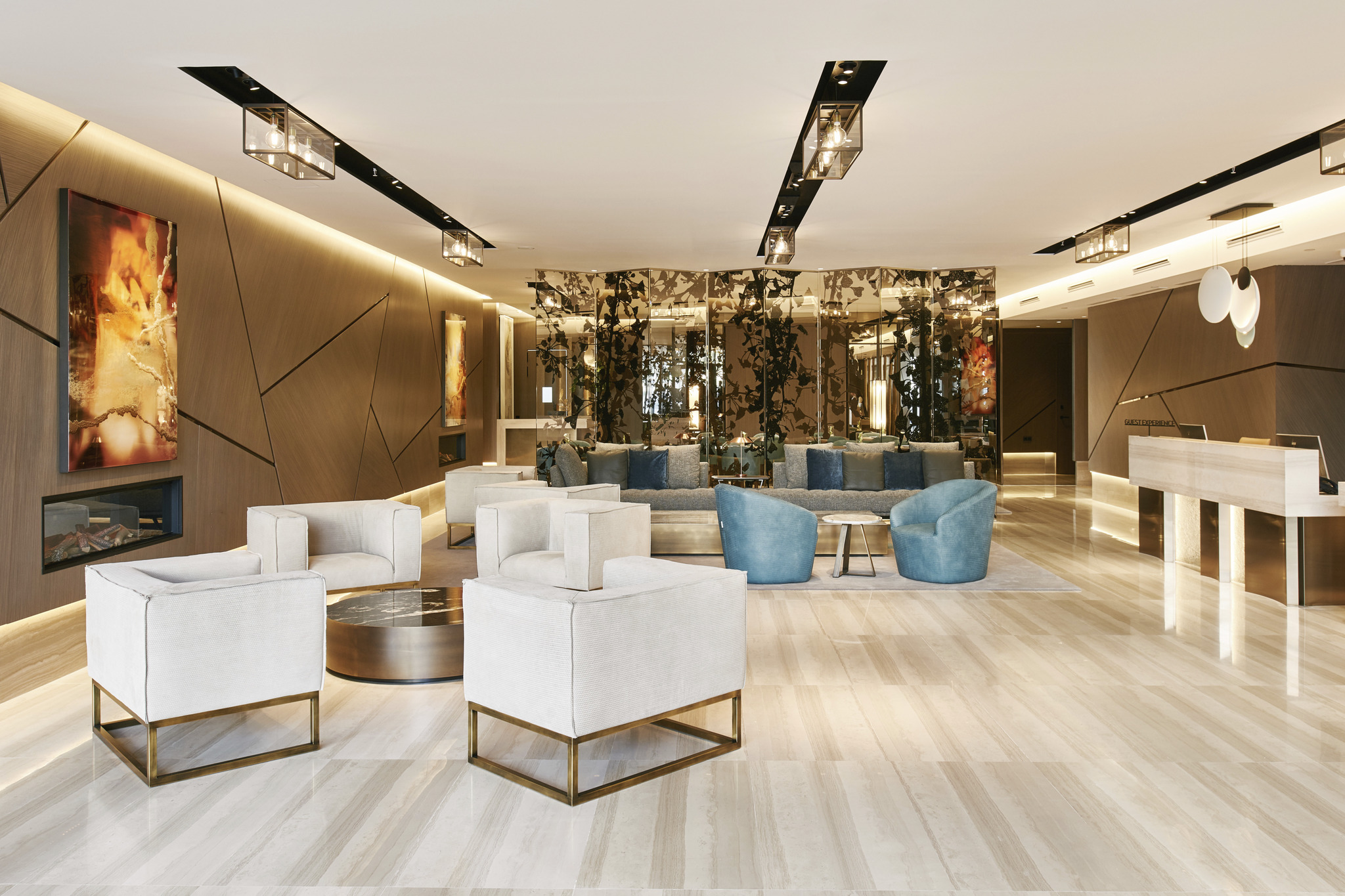 VP Plaza
España Design, right on the Plaza de España,
is brand new, with 214 rooms, Wi-Fi, an outdoor
pool, sauna, spa, business center, valet parking,
airport and a spectacular 12th floor Gingko
Restaurant and Sky Bar Lounge, which has become
one of the most popular after-six venues in the
city, with a grand panorama from which to view the
Royal Palace. The main restaurant’s menu is a mix
of Mediterranean and Japanese cuisine that ranges
from an octopus carpaccio and a Vietnamese salad
with mango and cashews to a burger with Galician
beef or Japanese-style fried chicken.
VP Plaza
España Design, right on the Plaza de España,
is brand new, with 214 rooms, Wi-Fi, an outdoor
pool, sauna, spa, business center, valet parking,
airport and a spectacular 12th floor Gingko
Restaurant and Sky Bar Lounge, which has become
one of the most popular after-six venues in the
city, with a grand panorama from which to view the
Royal Palace. The main restaurant’s menu is a mix
of Mediterranean and Japanese cuisine that ranges
from an octopus carpaccio and a Vietnamese salad
with mango and cashews to a burger with Galician
beef or Japanese-style fried chicken.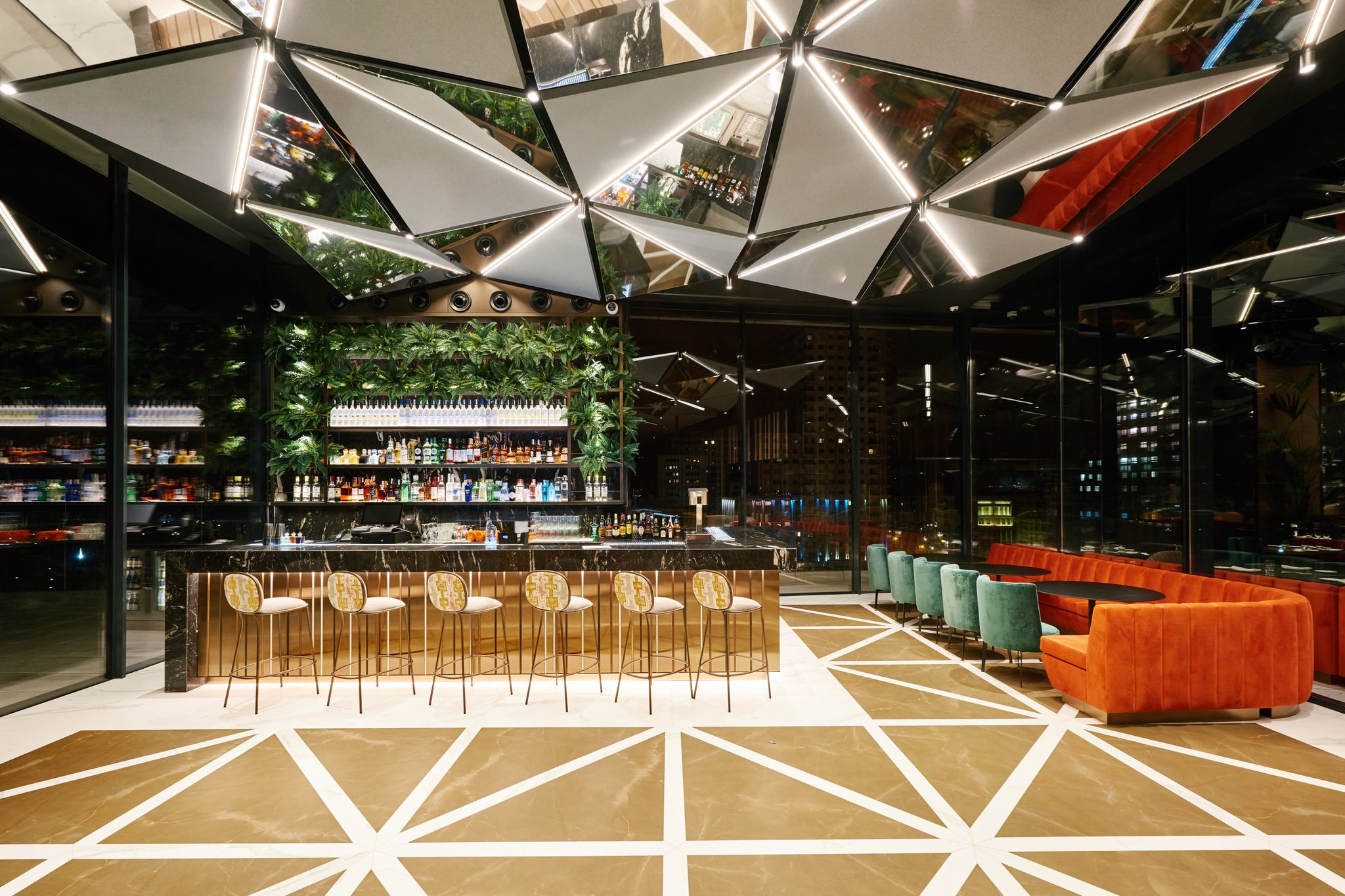
There are nine different types
and styles of rooms, some with a terrace, some
even with a private gym. My Superior-class room
(currently €215) was very spacious, with a
superbly outfitted bathroom. The smartly decorated
lobby is staffed with a young, English-speaking
crew who were very helpful,  including a doorman who
saved me from taking an Uber to the airport for
€65 by putting me in a taxi at a set price of €30.
including a doorman who
saved me from taking an Uber to the airport for
€65 by putting me in a taxi at a set price of €30.
The word “Design” in the name
carries weight, especially since the hotel was
built and is owned by VP Group, a leading European
furniture manufacturer specializing in interior
design for retail establishments. So the décor and
artwork were done by some of Spain’s leading
contemporary artists, including Pere Gifre’s
eight-story waterfall; Nacho Zubelzu’s fanciful
collages in the bar; Veronica Domingo’s
calligraphy; and Héléne Bergaz’s dramatic
photographic montages.
There are interior and exterior
gardens, and the indoor parking lot makes for easy
entry and exit.
The
Principal Madrid (Calle Marqués
de Valdeiglesias, 1, +34 915 21 87 43), now
four years old, with just 77 rooms is a boutique
hotel  right in
the center of Madrid, across from the historic
Metrópolis building and just a block from The
Prado and Thyssen-Bornemisza museums. Rooms right
now start at €226 per night. The Principal, too,
has a wonderful rooftop to savor at night, and its
restaurant, Ático, which I will be reviewing in an
upcoming issue, is now one of the finest in the
city and is also set on a high terrace. The
complimentary buffet breakfast is first-rate, with
a panoply of
Spanish hams and cheeses, eggs and
pastries. There’s also a charming small lounge for
cocktails. You can also take advantage of a free
4G pocket Wi-Fi device for touring the city.
right in
the center of Madrid, across from the historic
Metrópolis building and just a block from The
Prado and Thyssen-Bornemisza museums. Rooms right
now start at €226 per night. The Principal, too,
has a wonderful rooftop to savor at night, and its
restaurant, Ático, which I will be reviewing in an
upcoming issue, is now one of the finest in the
city and is also set on a high terrace. The
complimentary buffet breakfast is first-rate, with
a panoply of
Spanish hams and cheeses, eggs and
pastries. There’s also a charming small lounge for
cocktails. You can also take advantage of a free
4G pocket Wi-Fi device for touring the city.
Because of its size, this is a
quiet, intimate hotel—Madrid can be a loud city
late into  the
night—and you can check out up until 2 p.m. You
may even get a room upgrade free, if available.
the
night—and you can check out up until 2 p.m. You
may even get a room upgrade free, if available.
The
most flamboyant of Madrid’s new hotels is the
aptly named Only You (Calle
Barquillo 21; +34 910 05 22 22), carved out
of a 19th century mansion in the Salesas
neighborhood. Its décor throughout, by designer
Lázaro Rosa-Violán, seems to reference every
tradition of Spanish art and
culture with wit, like the El Padrino Bar and
Bookstore (right),
with a bull’s head on the wall, specials scrawled
on a column at the bar, an art nouveau concierge
and check-in desk, surrealist and cubist artwork,
old maps of the city, and elevators lined with
bookshelves. The Only You won the Best Boutique
Hotel in the World in the Design category.
and
culture with wit, like the El Padrino Bar and
Bookstore (right),
with a bull’s head on the wall, specials scrawled
on a column at the bar, an art nouveau concierge
and check-in desk, surrealist and cubist artwork,
old maps of the city, and elevators lined with
bookshelves. The Only You won the Best Boutique
Hotel in the World in the Design category.
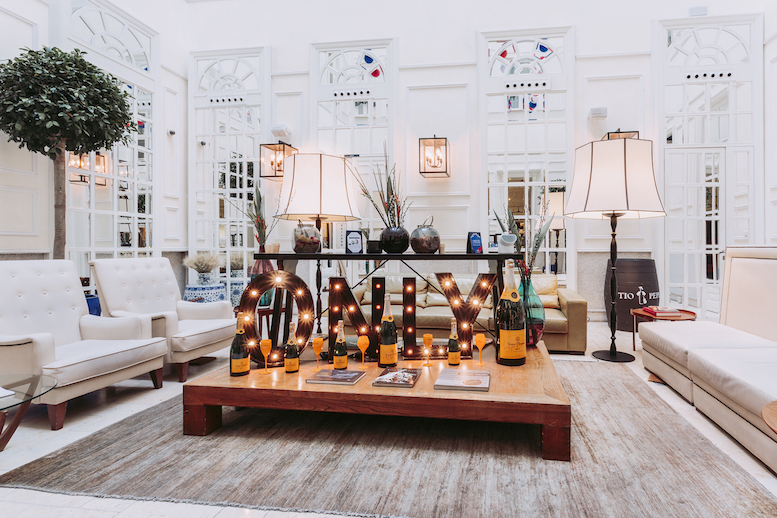 There are
six kinds of rooms: Deluxe, premium “Fabulofts,”
Suitehearts, Blue Suites and the Only You
Penthouse. The spa is a Thai Wellness center.
Currently rooms start at €192 per night.
There are
six kinds of rooms: Deluxe, premium “Fabulofts,”
Suitehearts, Blue Suites and the Only You
Penthouse. The spa is a Thai Wellness center.
Currently rooms start at €192 per night.
There’s an ample complimentary
breakfast that includes those wonderfully crisp
fritters called churros with thick hot chocolate,
with added a la carte specials that range from
eggs Benedict to chicken and shrimp dim sum.
❖❖❖
By John Mariani
Food photos by Evan Sung
JOËL ROBUCHON
85 Tenth Avenue
212-488-8885
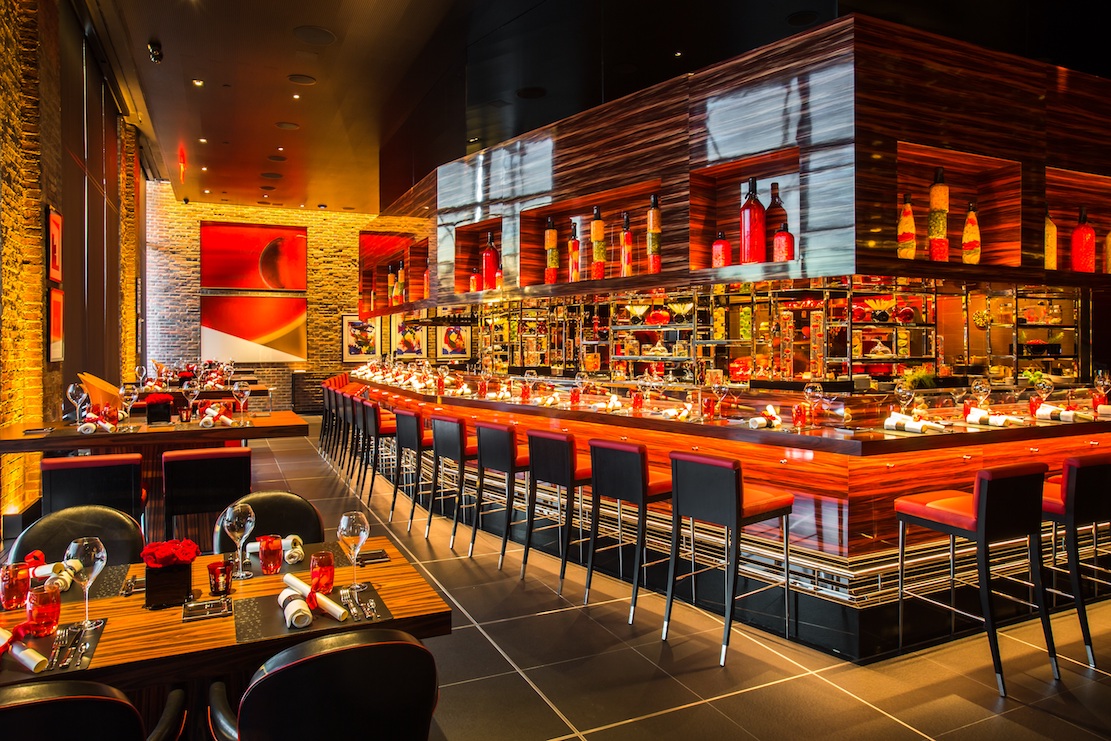
 The
death of master chef-entrepreneur Joël
Robuchon (left)
three months ago threw into frantic question
what would happen, both in image and quality,
to his 28 restaurants around the world, from
Hong Kong to London, from Macao to Las Vegas. In
particular, it was feared that Robuchon, as
the recipient of 32 Michelin stars—more than
any other chef—might lose those coveted stars,
as used to be the policy of that draconian
Guide when a chef died or left his restaurant.
The
death of master chef-entrepreneur Joël
Robuchon (left)
three months ago threw into frantic question
what would happen, both in image and quality,
to his 28 restaurants around the world, from
Hong Kong to London, from Macao to Las Vegas. In
particular, it was feared that Robuchon, as
the recipient of 32 Michelin stars—more than
any other chef—might lose those coveted stars,
as used to be the policy of that draconian
Guide when a chef died or left his restaurant.
Publication dates made it too
late for Michelin to change the star ratings of
existing restaurants in editions coming out this
fall, but in New York, where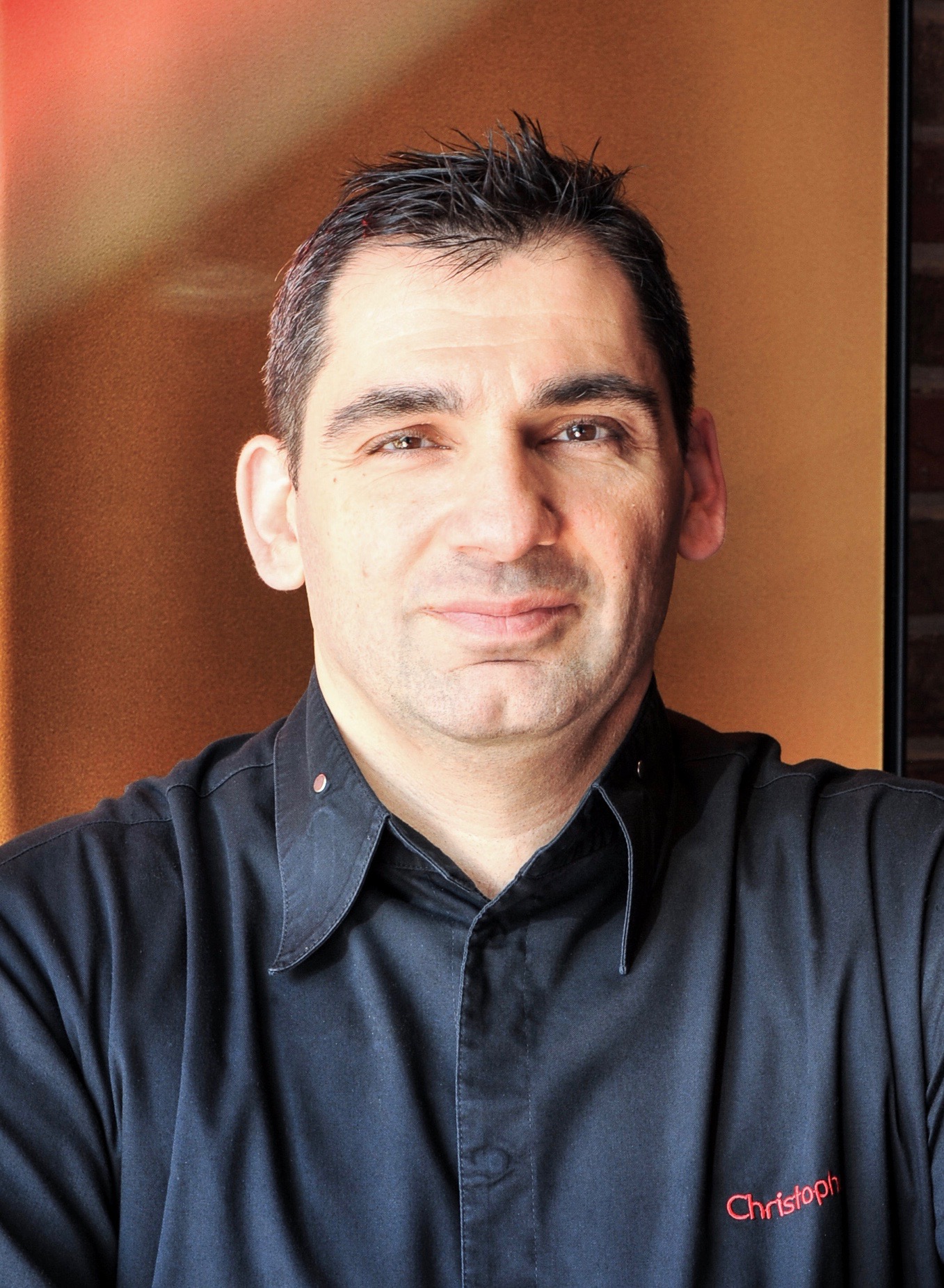 one of
Robuchon’s many L’Atelier concepts debuted less
than a year ago (thereby missing last year’s
edition), everyone wondered if chef Christophe
Bellanca (right)
would “get the call” from Michelin to alert him
that a star rating was imminent. He
got the call: Two stars, which in Michelinese
means “worth a detour.” (Incidentally, an
earlier New York incarnation of L’Atelier had a
disappointing run at The Four Seasons Hotel in
midtown and closed a few years ago.)
one of
Robuchon’s many L’Atelier concepts debuted less
than a year ago (thereby missing last year’s
edition), everyone wondered if chef Christophe
Bellanca (right)
would “get the call” from Michelin to alert him
that a star rating was imminent. He
got the call: Two stars, which in Michelinese
means “worth a detour.” (Incidentally, an
earlier New York incarnation of L’Atelier had a
disappointing run at The Four Seasons Hotel in
midtown and closed a few years ago.)
Now, whatever one thinks of
the Michelin
Guide ratings and the tire company’s
secretive processes, there is no doubt that a
two- or three-star rating is given only to an
outstanding restaurant. And, by
any measure, L’Atelier de Joël Robuchon New York
is well out of the ordinary and further evidence
that fine dining at a very high level is alive
and very well—even if it takes place at a swank
counter in Chelsea. But, what a counter it is!
All the L’Ateliers have them.
Paris was the first, where I recall being
dazzled by a menu that stretched from Spanish jamon and
tapas to grilled langoustine and Robuchon’s
decadent, heavily butter-whipped potatoes.
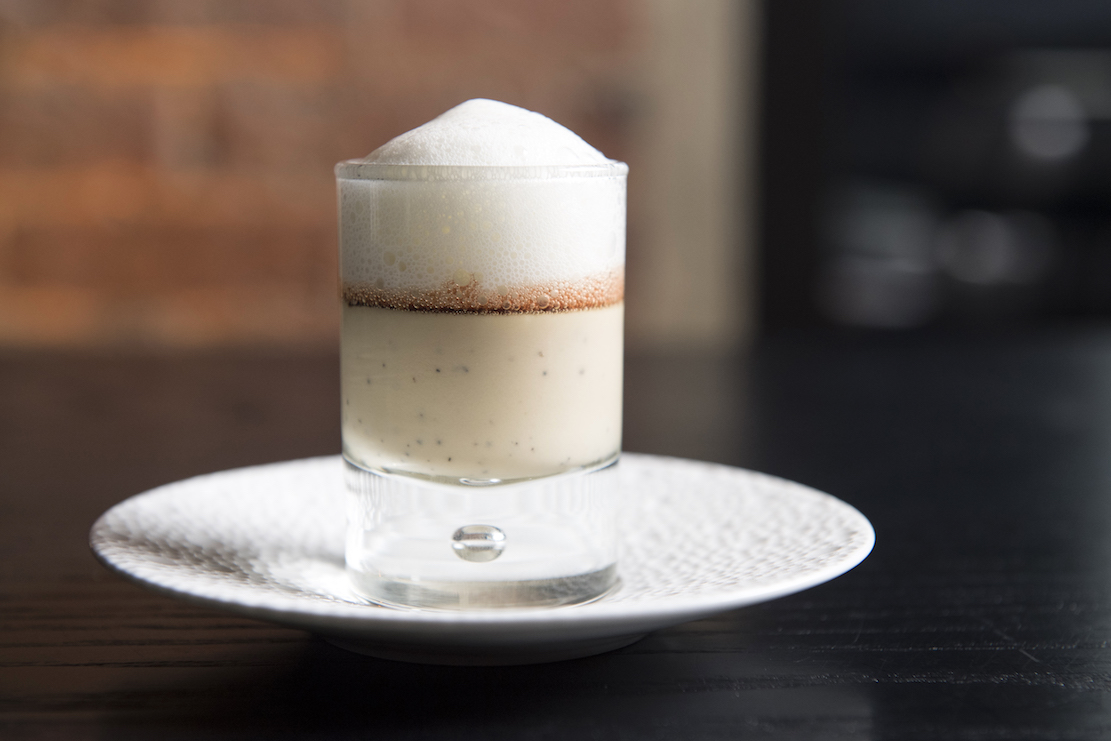 In
a restaurant like L’Atelier you can pretty
quickly tell just how splendidly the night will
go when the bread basket is filled with
made-in-house baguettes, cheese-filled buns and
rolls so delicious that, if you go the à la
carte route, you might polish them all off in
favor of another course. I am no fan of long
tasting menus, but our $230 ten-course
extravaganza came with dishes so well
proportioned, and at such a sensible pace, that,
although sated by the time we got to the meat
courses, we did not want to miss anything that
followed.
In
a restaurant like L’Atelier you can pretty
quickly tell just how splendidly the night will
go when the bread basket is filled with
made-in-house baguettes, cheese-filled buns and
rolls so delicious that, if you go the à la
carte route, you might polish them all off in
favor of another course. I am no fan of long
tasting menus, but our $230 ten-course
extravaganza came with dishes so well
proportioned, and at such a sensible pace, that,
although sated by the time we got to the meat
courses, we did not want to miss anything that
followed.
We began with an item that made my wife
swoon and me smile broadly—foie gras royale with
parmesan foam and an emulsion of “old vines”
Maury, a sweet wine from Roussillon (left). This
was one of several dishes with the initial “JR”
next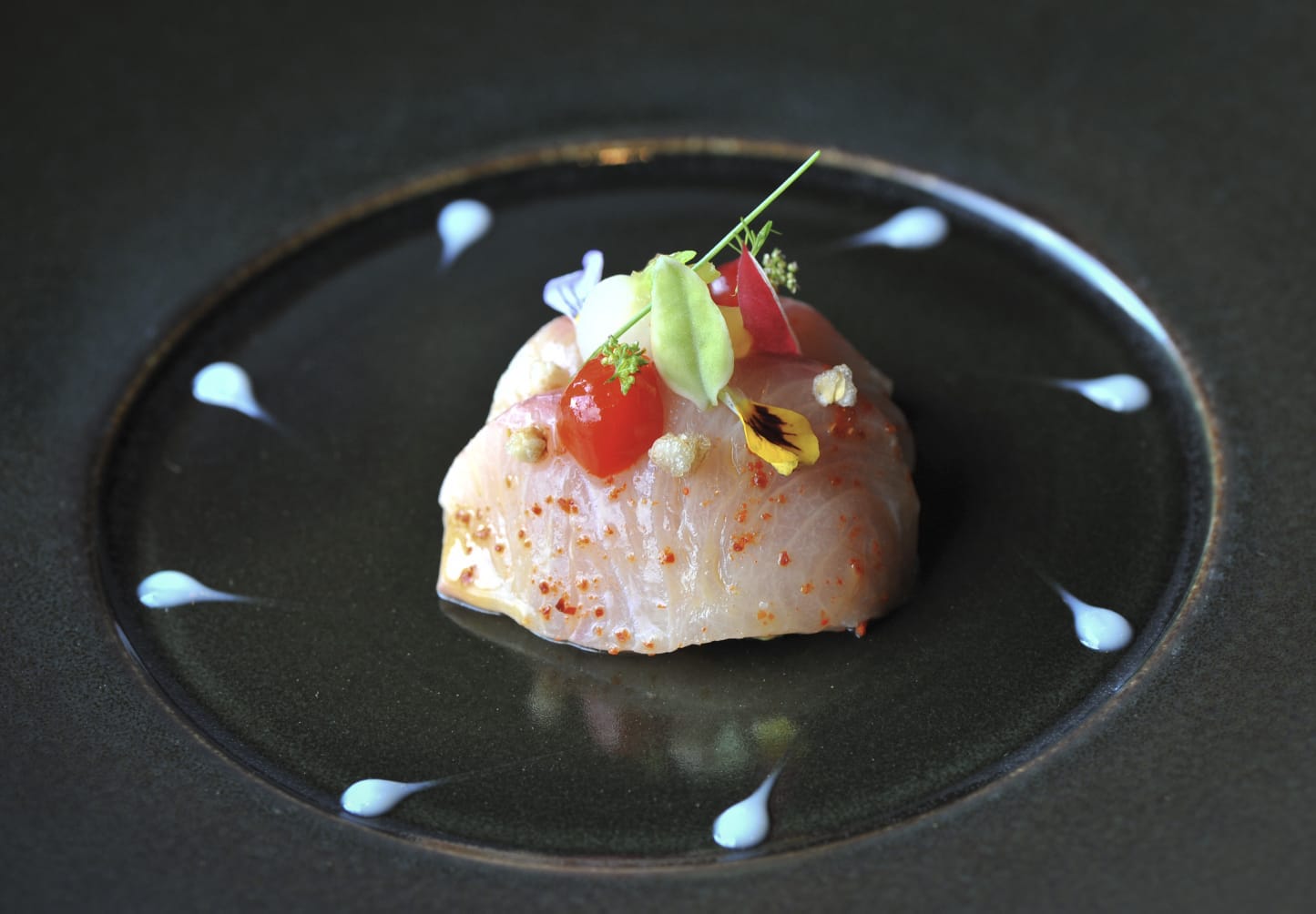 to them, meaning it’s a
Robuchon classic. As chef Bellanca explained,
since the master’s death he will always keep
those dishes on his menus, while creating new
ones definitively in the Robuchon style.
to them, meaning it’s a
Robuchon classic. As chef Bellanca explained,
since the master’s death he will always keep
those dishes on his menus, while creating new
ones definitively in the Robuchon style.
The next dish was crab in a
light cauliflower velouté, then hamachi with
cilantro-flecked
guacamole and yuzu dressing
(à
la carte, $26), reflecting a French
version of global cuisine (right). There
also was a sweet, lush puree of eggplant
splashed with white balsamic vinegar and dots of
vegetable curry ($26). A roasted sea scallop
with a sunchoke puree, parsley and mushroom
emulsion ($36) followed, then pumpkin-flavored
Parisian gnocchi with white truffle shavings and
mimolette
tuile ($38)—a good dish, although the white
truffles really hadn’t much flavor.  (I’m glad
that there was no supplement.) Much finer was
lobster poached in lemongrass oil and served
with romanesco cauliflower and potato ($38).
(I’m glad
that there was no supplement.) Much finer was
lobster poached in lemongrass oil and served
with romanesco cauliflower and potato ($38).
The
only dish that made little impression was
Icelandic cod topped with caviar, baby leeks and
a Champagne sauce ($42). Grilled wagyu beef with
black garlic, plump matsutakes
and eggplant compote ($89) was rich without
being cloying, as wagyu so often is. There was a
generous degree of lagniappe in duck breast as
spiced and served with poached pear and celeriac
($32). Then came pink, fatted quail (left) that
had been caramelized and stuffed with foie gras
($32) and accompanied by Robuchon’s famous,
devastatingly good potato puree, which my wife
calls “butter with potato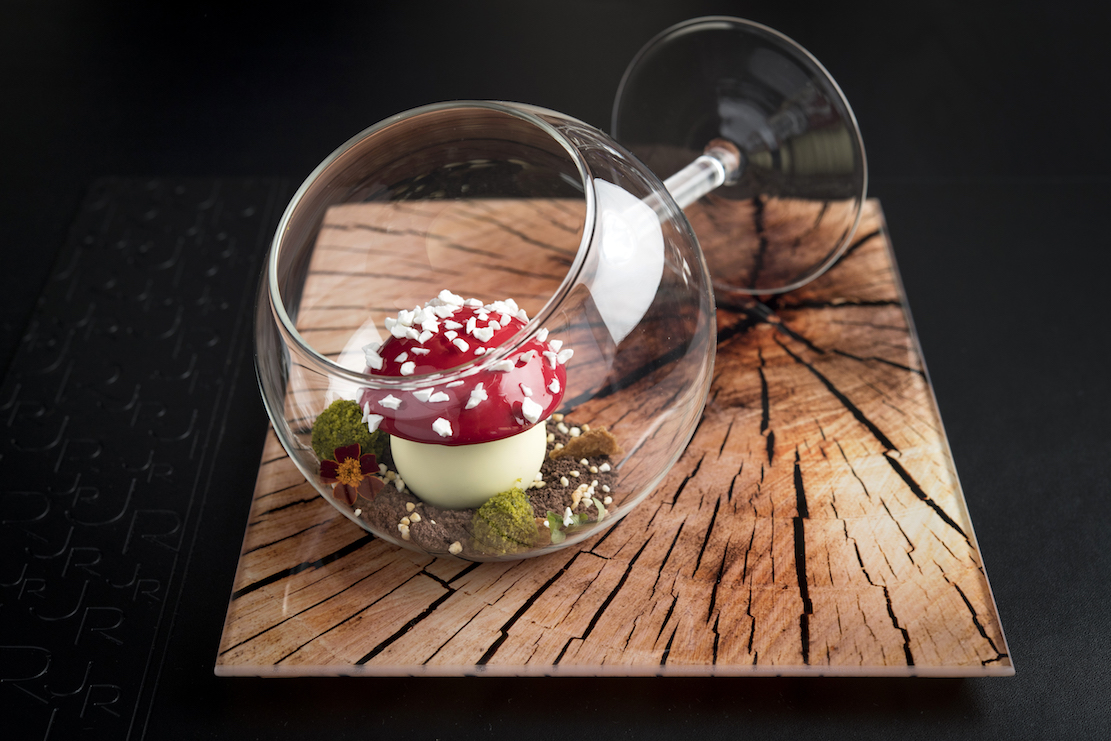 added.”
added.”
Not that we needed a cheese
course after all this, but I might have expected
it of a French menu. Instead, we enjoyed poached
cranberries and green apple sorbet with kalamansi
foam, and La Noire Fôret (right)—a
take on black forest cake—that was a creamy
chocolate mousse with Kirsch-marinated cherries
and Chantilly cream.
Beverage director John
McKenna stocks what is one of the most
exceptional wine lists in the city, pricey but
with a number of more affordable bottles of good
provenance.
L’Atelier
is proof, once again, that haute cuisine
requires a creativity that always bolsters what
the land and sea provide—-and what a great chef
can add, so that there is no confusion on the
plate, only amazement and pleasure. If its cost
means it’s a special occasion place, I can think
only that Le Bernardin, Günther Seeger and
Gabriel Kreuther in New York are the match of
L’Atelier. We’ll see what Michelin says next
year.
Open for dinner Mon.-Sat.
By Geoff Kalish
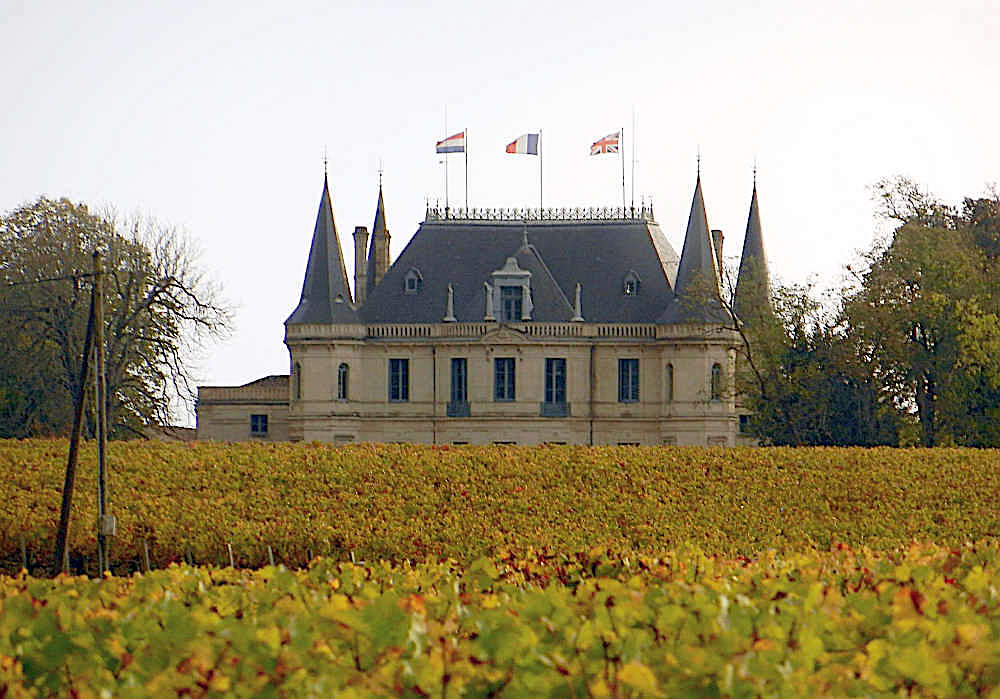 When
people ask me, “What’s your favorite wine?” I
generally answer that it depends on what I’m
eating and where I am. If pressed further, I
tell them that, if I died and went to heaven,
I’d want to go with a bottle of Château Mouton
Rothschild (left)
in one hand and a bottle of Château d’Yquem (below) in
the other. So, when a recent opportunity to
taste multiple vintages of these wines, as
well as some other great Bordeaux, came up, I
readily accepted. The event, held at
Manhattan’s New Museum, was sponsored by the
importer of the wines, Wine Book, a division
of Maison Marques & Domaines.
When
people ask me, “What’s your favorite wine?” I
generally answer that it depends on what I’m
eating and where I am. If pressed further, I
tell them that, if I died and went to heaven,
I’d want to go with a bottle of Château Mouton
Rothschild (left)
in one hand and a bottle of Château d’Yquem (below) in
the other. So, when a recent opportunity to
taste multiple vintages of these wines, as
well as some other great Bordeaux, came up, I
readily accepted. The event, held at
Manhattan’s New Museum, was sponsored by the
importer of the wines, Wine Book, a division
of Maison Marques & Domaines. 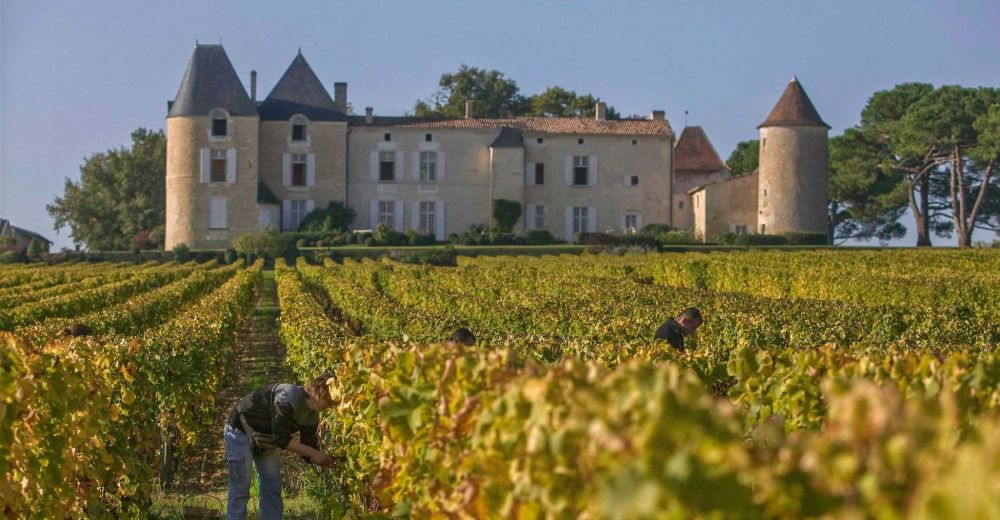
As expected,
the Moutons and the Yquems were the stars of the
show, but there were a number of bottles with
less lofty prices that could hold their own with
the best and are ready for drinking now.
First a few words about the
big name celebrity bottles, then some of my
favorites among the lesser luminaries.
Not
surprisingly, the 2010 Mouton ($1,045), made
of 94% Cabernet Sauvignon and only 6% Merlot,
was a powerful wine with a strong bouquet and
robust flavor of cassis and chocolate and notes
of cedar with a slightly tannic finish. It’s
meant to be consumed at least 10 years from now,
and after a few hours of decanting. On the other
hand, the 2014
($515)—only 81% Cabernet Sauvignon and
16% Merlot and 3% Cabernet Franc—seemed less
powerful, but perhaps more elegant, than the
2010, with a fragrant bouquet and concentrated
taste of ripe cherries and raspberries with
notes of vanilla in its finish. Expect this wine
to develop more layers of flavor over the next
10-20 years.
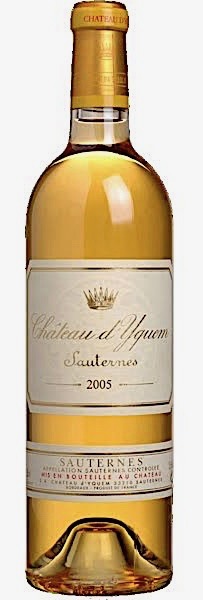 Both
Yquems sampled—the 2016 ($350) and the 2005
($418)—showed honey and spice and undertones of
gingerbread and marzipan with vibrant acidity in
their finish. The 2005 was more viscous and
showing more exotic spice than the 2016. Either
wine could be consumed now, especially with foie
gras or blue-veined cheeses, but should continue
to develop layer upon layer of flavor and
viscosity and lose much sweetness over the next
10-20 years.
Both
Yquems sampled—the 2016 ($350) and the 2005
($418)—showed honey and spice and undertones of
gingerbread and marzipan with vibrant acidity in
their finish. The 2005 was more viscous and
showing more exotic spice than the 2016. Either
wine could be consumed now, especially with foie
gras or blue-veined cheeses, but should continue
to develop layer upon layer of flavor and
viscosity and lose much sweetness over the next
10-20 years.
Now
for the “so called” lesser lights from Left Bank
(on a map, the left side of the Garonne and
Dordogne Rivers). The 2012 Château d’Armailhac
($52), from the producer of Mouton Rothschild,
was made of a blend of Cabernet Sauvignon (54%),
Merlot (29%), Cabernet Franc (14%) and Petite
Verdot (3%). It has a bouquet and flavor of
cassis and raspberries with hints of vanilla in
its long, smooth finish. 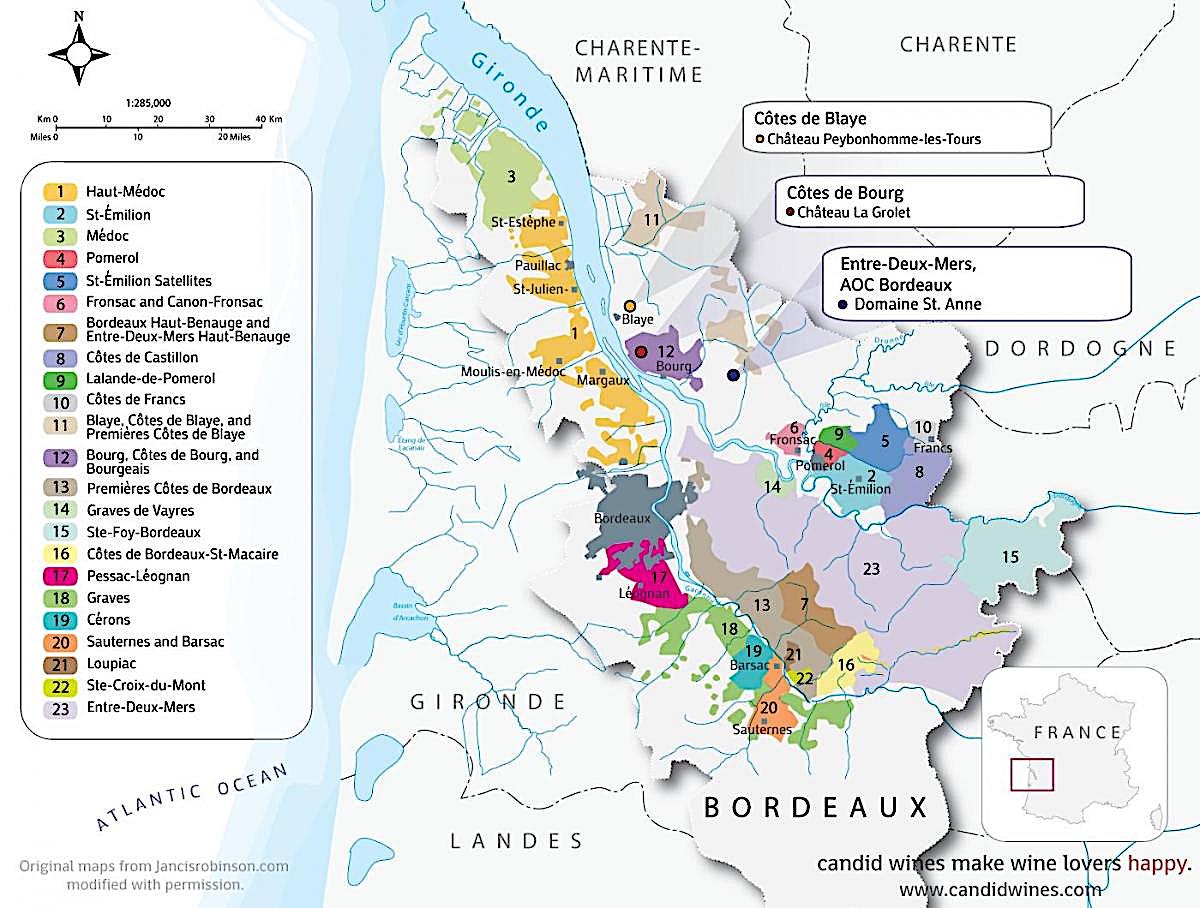 This is an elegant
wine, perfect with prime rib, duck or turkey. Also
from the producer of Mouton, a less well-known
2009 Pastourelle de Clerc Milon ($52) is an
excellent choice to mate with steak or prime
rib. Made from a blend of Cabernet Sauvignon
(50%), Merlot (36%), Cabernet Franc (11%), Petit
Verdot (2%) and Carmenere (1%), this wine has a
distinctive bouquet and taste of black currants
and anise with hints of mint in its finish. It
requires about an hour or so of decanting, or
some vigorous swirling in a large glass, to
bring out its full flavors and add a bit of
cherry to the finish.
This is an elegant
wine, perfect with prime rib, duck or turkey. Also
from the producer of Mouton, a less well-known
2009 Pastourelle de Clerc Milon ($52) is an
excellent choice to mate with steak or prime
rib. Made from a blend of Cabernet Sauvignon
(50%), Merlot (36%), Cabernet Franc (11%), Petit
Verdot (2%) and Carmenere (1%), this wine has a
distinctive bouquet and taste of black currants
and anise with hints of mint in its finish. It
requires about an hour or so of decanting, or
some vigorous swirling in a large glass, to
bring out its full flavors and add a bit of
cherry to the finish.
And while the 2010 Château
Pichon Longueville ($230) will take at least
another 10 years to reach its aesthetic peak,
the 2011 Réserve de la Comtesse ($47), from the
same producer—a blend of predominantly Merlot,
Cabernet Sauvignon and Petit Verdot—is ready to
drink now, with a bouquet and flavors of plums
and chocolate and notes of herbs with a smooth
long finish, perfect to marry with roasted
chicken or even beef stew. Similarly,
while the 2015 Château Ducru-Beaucaillou ($200)
will take years to reach maturity, the 2010
Croix de Beaucaillou ($68), from the same
producer, is at its peak, with mellow flavors of
cassis, blueberries and herbs, perfect to
accompany roasted game birds, salmon and rather
bland cheeses like Brie, Brillat Savarin and
Münster.
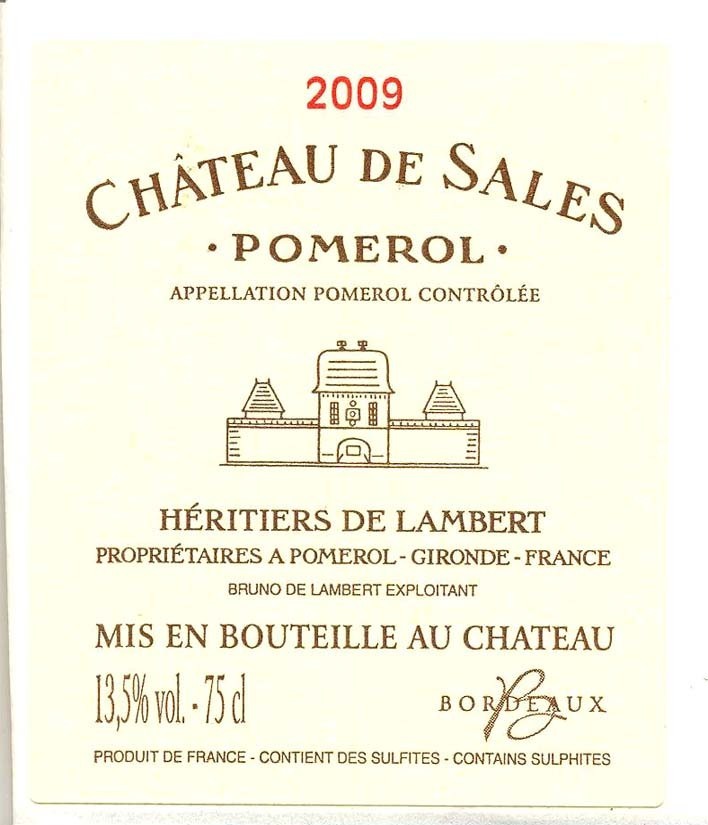 As to
wines from the Right Bank, with a far longer
history of winemaking than those on the Left,
the 2009 Château de Sales ($42), from the
largest estate in Pomerol, is a notable bargain.
As is typical of the wines from the area, it
contains predominantly Merlot (70%) and about
15% of Cabernet Franc, and an equal amount of
Cabernet Sauvignon, showing ripe, easy-drinking
flavors of black currants and cherries, with a
long, smooth finish. And, while I usually prefer
a white wine or Burgundy with seafare, I would
readily mate this bottle with flavorful fish,
like tuna or swordfish, as well as chicken and
game birds.
As to
wines from the Right Bank, with a far longer
history of winemaking than those on the Left,
the 2009 Château de Sales ($42), from the
largest estate in Pomerol, is a notable bargain.
As is typical of the wines from the area, it
contains predominantly Merlot (70%) and about
15% of Cabernet Franc, and an equal amount of
Cabernet Sauvignon, showing ripe, easy-drinking
flavors of black currants and cherries, with a
long, smooth finish. And, while I usually prefer
a white wine or Burgundy with seafare, I would
readily mate this bottle with flavorful fish,
like tuna or swordfish, as well as chicken and
game birds.
Also from Pomerol and
containing about 80% Merlot grown in gravelly
soil, a 2008 Château Lafleur-Gazin ($42)
shows a rich bouquet and taste of cassis and
chocolate with notes of anise in its finish. A
more complex wine than the de Sales, this bottle
makes great accompaniment to grilled lamb or
veal as well as heady cheeses like Stilton and
Époisses du Bourgogne.
Albeit
a bit pricey, another wine worthy of seeking out
is the 2014 Château Hosanna ($124), from a
vineyard in Pomerol facing the illustrious
Château Pétrus and planted with 70% Merlot and
30% Cabernet Franc. It has flavors of cassis,
herbs and a bit of tannin in its finish. It’s
fine to consume now with hearty fare like pork
belly or short ribs as well as mild cheeses like
Brie and Münster. Expect this wine to mature
over the next 10-20 years, developing additional
levels of flavor and a smoother finish.
❖❖❖

THEY
TRIED TO MAKE A MARIO BATALI
DOLL BUT COULDN'T FIT IT INTO THE BOX
TV Chef Ree Drummond, known as the Pioneer
Woman, now has her own Barbie doll with a
well-stocked kitchen full of accessories and
appliances, available
exclusively from Walmart
at $44.88.

·
"Not long ago, I spent a week walking around Paris. Before you yawn jadedly, let me clarify: I walked all the way around Paris. I began each day by donning a pair of beat-up Sauconys, consuming a prodigious breakfast at my hotel near the Porte Dorée, tucking a notebook and pen into my pocket, and proceeding on foot in a counterclockwise direction along the perimeter of the oval-shaped metropolis."--David McAninch, "Paris on Foot: 35 Miles, 6 Days and One Blistered Toe," NY Times (10/22/18)
Wine
Column Sponsored by Banfi Vintners
SANGIOVESE
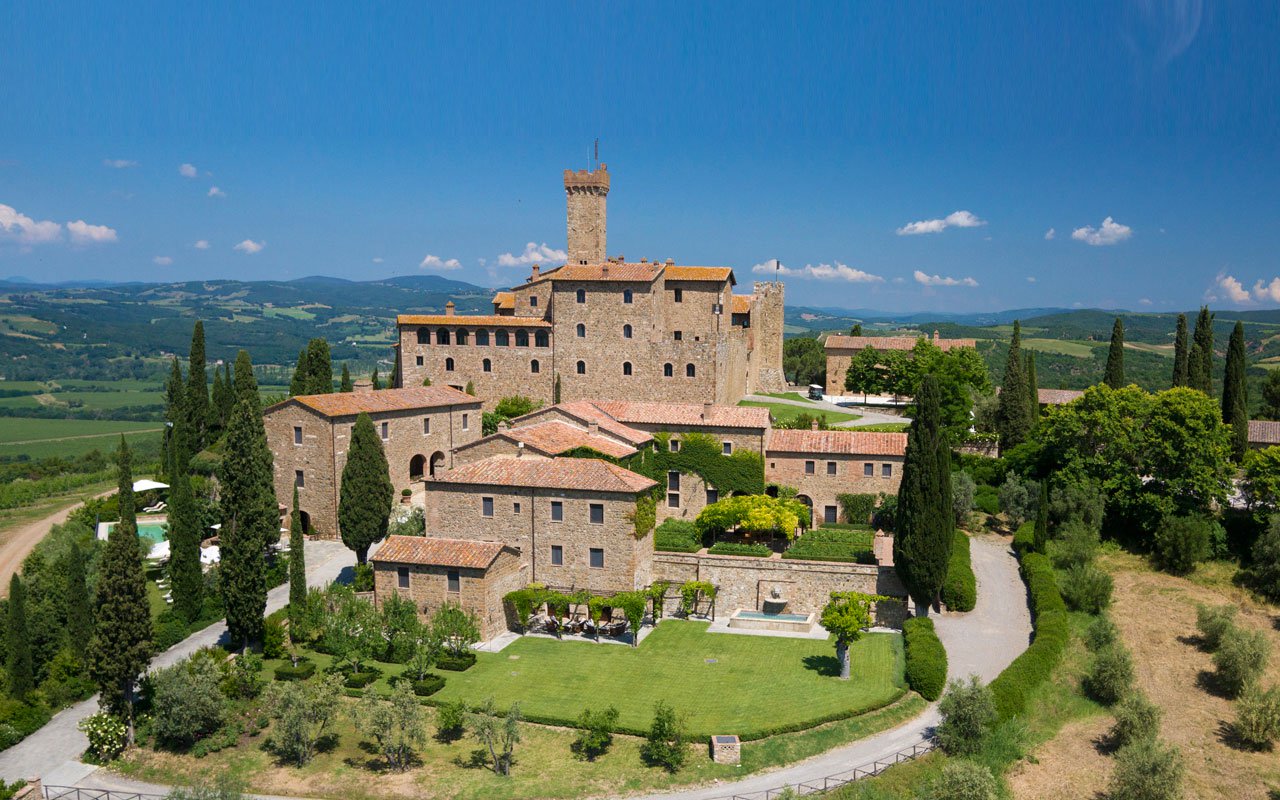 Wine is a joy year-round but
in cooler weather one
grape varietal has really taken center stage in
my daily activities – that most Italian of
grapes, Sangiovese, and its ultimate expression
– Brunello di Montalcino.
Wine is a joy year-round but
in cooler weather one
grape varietal has really taken center stage in
my daily activities – that most Italian of
grapes, Sangiovese, and its ultimate expression
– Brunello di Montalcino.
From mid-September through mid-October,
the Sangiovese grown for our various styles of red
wines are be harvested, culminating with the top
selection for Brunello di Montalcino.
Second, cooler weather here means
it is time to start enjoying more red wines and
especially Sangiovese based wines. That
includes Banfi’s cru of Brunello, Poggio alle Mura,
literally the cream of the crop of our Sangiovese
vineyards. Alongside our Poggio alle Mura Brunello di
Montalcino, this year we introduced two more wines
from the cru Poggio alle Mura – a Rosso di Montalcino
and a Riserva of Brunello. Rosso is sort of like the
younger brother of Brunello, also made from 100%
Sangiovese grapes but usually a selection from younger
vines and the wine is aged only two years compared to
the four required for Brunello. The
Riserva, on the other hand, is an even more selective
harvest of Sangiovese, and ages for an additional year
before release.
What is so special about this cru
Poggio alle Mura?
Well, it is the result our over 30 years of
ongoing research at my family’s vineyard estate,
Castello Banfi.
When we first began planting our vines there in
the late 1970s studies from the University of Bordeaux
indicated which strains of many varietals we should
plant, based on the soil type and microclimate of each
vineyard. But
when it came to the region’s native Sangiovese, there
was only local lore, no scientific research. So we took
it upon ourselves to figure out this vine, and set off
on three decades of incredibly detailed research.
We started
with 600 apparent variations on Sangiovese, because it
is so susceptible to variations in weather and soil,
and narrowed that down to 160 truly genetically
different clones.
We planted a vineyard with two rows of each
type, made wine from each of them, and charted the
differences – remember, you only get one chance a year
to make wine, so this took time.
It took about ten years to get some
concrete results, though we continue to experiment
today and always will – you never stop learning in
science and nature!
Once we determined which were the best,
complementary clones that could be planted together to
make the best Brunello, we chose to plant them in what
we determined to be the optimal vineyard sites. Coincidentally,
the best soils and climate conditions are in the
slopes surrounding the medieval fortress today known
as Castello Banfi, known since Etruscan times as
Poggio alle Mura – the walled hilltop. Hence the
name of our most special “cru” of Brunello,
representing a synthesis between tradition and
innovation.
Though the focus of this study was
our Brunello, all of our Sangiovese-based wines,
including the super Tuscans SummuS, Cum Laude, and
Centine, benefitted from this work. And that’s
the third reason for celebrating Sangiovese this
month, for the range of wonderful reds that usher us
into autumn! One
wine in particular was inspired by our research – the
BelnerO, a Sangiovese dominant blend with what I like
to call a kiss of Cabernet and a whisper of Merlot. We grow the
grapes a little differently for BelnerO than for
Brunello, make the wine with less oak aging and
released it earlier from the winery, providing a
counterpoint to Brunello and a lovely terroir-driven
wine in its own right.
If you
know Italians, you know that by nature we are
multi-faceted, varying in mood, and always passionate. As a
nation, we span from the hot sunny beaches of Sicily
near the African coast to the rugged mountains and
Alpine ski slopes of Trentino-Alto Adige in the north. Sangiovese
is grown in almost all of Italy’s regions and reflects
the unique nature of each; it is most famous
(rightfully so) in Tuscany, yet even there it reflects
the nuances of each hilltop, valley and subzone. It has
something a little different to say in Brunello than
Chianti, Morellino than Vino Nobile di Montepulciano,
Rosso di Montalcino than Super Tuscan blends.
Here is a smattering of
Sangiovese-based wines that you may wish to get to
know better, reflecting a spectrum that appeals to
every occasion, every taste, and every budget. We can
assure you that the conversation will never become
boring. 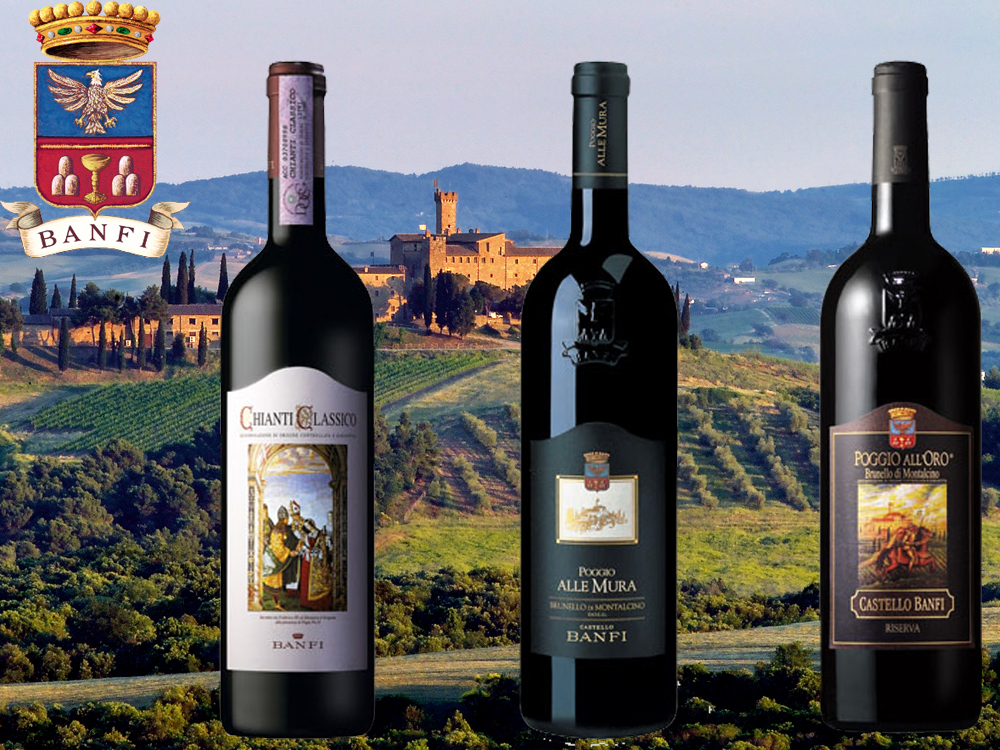
Recommendations for Celebrating
Sangiovese
BelnerO Proprietor’s Reserve Sangiovese
– A refined
cuvée of noble red grapes perfected by our pioneering
clonal research. This dark beauty, BelnerO, is
produced at our innovative winery, chosen 11
consecutive years as Italy’s Premier Vineyard Estate.
Fermented in our patented temperature controlled
French oak and aged approximately 2 additional years.
Unfiltered, and Nitrogen bottled to minimize sulfites.
Castello Banfi Brunello di Montalcino –
Rich, round, velvety and intensely
aromatic, with flavor hints of licorice, cherry, and
spices. Brunello di Montalcino possesses an intense
ruby-red color, and a depth, complexity and opulence
that is softened by an elegant, lingering aftertaste.
Unfiltered after 1998 vintage.
Castello Banfi Rosso di Montalcino – Brunello's "younger brother," produced
from select Sangiovese grapes and aged in barrique for
10 to 12 months. Deep ruby-red, elegant, vibrant,
well-balanced and stylish with a dry velvety
finish.
Poggio all’Oro Brunello di Montalcino
Riserva – A single vineyard selection of our most
historically outstanding Sangiovese, aged five years
before release, the additional year more than that
required of Brunello including 6 months in barrel and
6 months more in bottle to grant its “Riserva”
designation. Incredible
elegance and harmony. Intense with lots of fruit and
subtle wood influence. Round, complete, well balanced
with hints of chocolate and berries. Unfiltered after
1998.
Poggio alle Mura – The first tangible result of years of
intensive clonal research on Montalcino’s native
Sangiovese grape.
Estate bottled from the splendidly sun drenched
vineyards surrounding the medieval Castello from which
it takes its name.
The Brunello
di Montalcino is seductive, silky and smoky. Deep ruby
in color with an expressive bouquet of violets, fruits
and berries as well as cigar box, cedar and exotic
spices. The Rosso
di Montalcino is also intense ruby red. The bouquet
is fresh and fruity with typical varietal notes of
cherry and blackberry, enriched by more complex hints
of licorice, tobacco and hazelnut. It is full
bodied, yet with a soft structure, and a surprisingly
long finish. The Poggio alle Mura Brunello di Montalcino
Riserva is deep ruby red with garnet
reflections and a rich, ample bouquet that hints of
prune jam, coffee, cacao and a light balsamic note. It is full
and powerful, with ripe and gentle tannins that make
it velvety and harmonious; this wine is supported by a
pleasing minerality that to me speaks soundly of that
special hillside in southern Montalcino.
SummuS – A wine of towering elegance, SummuS is an
extraordinary blend of Sangiovese which contributes
body; Cabernet Sauvignon for fruit and structure; and
Syrah for elegance, character and a fruity bouquet. An elegant,
complex and harmonious red wine.
Cum Laude – A complex and elegant red which graduated
“With Honors,” characterized by aromas of juicy
berries and fresh spices.
Centine – A Cuvee that is more than half
Sangiovese, the balanced consisting of equal parts of
Cabernet Sauvignon and Merlot. Vinified in
a firm, round style that easily accompanies a wide
range of dishes, this is a smooth and fragrantly
satisfying wine with international character, and a
perennial favorite at my own dinner table.
Banfi Chianti Superiore – The “Superiore” designation signifies
stricter government regulations regarding production
and aging requirements, as compared to regular
Chianti. An
intense ruby red wine with fruit forward aromas and
floral notes. This
is a round wine with well-balanced acidity and fruit.
Banfi Chianti Classico – An enduring classic: alluring
bouquet of black fruit and violets; rich flavors of
cherry and leather; supple tannins and good acidity
for dining.
Banfi Chianti Classico Riserva – Produced from select grapes grown in the
"Classico" region of Chianti, this dry, fruity and
well-balanced red has a full bouquet reminiscent of
violets.
Fonte alla Selva Chianti Classico – This is our newest entry into the Chianti
arena, coming from a 99 acre estate in Castellina, the
heart of the Chianti Classico region. The wine is
a captivating mauve red that smells of cherry, plum
and blackberry with hints of spice. It is
round, full and balanced with very good
acidity.
Col di Sasso – Sangiovese and Cabernet Sauvignon. Luscious,
complex and soft with persistent notes of fruit and
great Italian style structure.
Any of John Mariani's books below may be ordered from amazon.com.
 The Hound in Heaven
(21st Century Lion Books) is a novella, and
for anyone who loves dogs, Christmas, romance,
inspiration, even the supernatural, I hope you'll find
this to be a treasured favorite. The story
concerns how, after a New England teacher, his wife and
their two daughters adopt a stray puppy found in their
barn in northern Maine, their lives seem full of promise.
But when tragedy strikes, their wonderful dog Lazarus and
the spirit of Christmas are the only things that may bring
his master back from the edge of despair.
The Hound in Heaven
(21st Century Lion Books) is a novella, and
for anyone who loves dogs, Christmas, romance,
inspiration, even the supernatural, I hope you'll find
this to be a treasured favorite. The story
concerns how, after a New England teacher, his wife and
their two daughters adopt a stray puppy found in their
barn in northern Maine, their lives seem full of promise.
But when tragedy strikes, their wonderful dog Lazarus and
the spirit of Christmas are the only things that may bring
his master back from the edge of despair. WATCH THE VIDEO!
“What a huge surprise turn this story took! I was completely stunned! I truly enjoyed this book and its message.” – Actress Ali MacGraw
“He had me at Page One. The amount of heart, human insight, soul searching, and deft literary strength that John Mariani pours into this airtight novella is vertigo-inducing. Perhaps ‘wow’ would be the best comment.” – James Dalessandro, author of Bohemian Heart and 1906.
“John Mariani’s Hound in Heaven starts with a well-painted portrayal of an American family, along with the requisite dog. A surprise event flips the action of the novel and captures us for a voyage leading to a hopeful and heart-warming message. A page turning, one sitting read, it’s the perfect antidote for the winter and promotion of holiday celebration.” – Ann Pearlman, author of The Christmas Cookie Club and A Gift for my Sister.
“John Mariani’s concise, achingly beautiful novella pulls a literary rabbit out of a hat – a mash-up of the cosmic and the intimate, the tragic and the heart-warming – a Christmas tale for all ages, and all faiths. Read it to your children, read it to yourself… but read it. Early and often. Highly recommended.” – Jay Bonansinga, New York Times bestselling author of Pinkerton’s War, The Sinking of The Eastland, and The Walking Dead: The Road To Woodbury.
“Amazing things happen when you open your heart to an animal. The Hound in Heaven delivers a powerful story of healing that is forged in the spiritual relationship between a man and his best friend. The book brings a message of hope that can enrich our images of family, love, and loss.” – Dr. Barbara Royal, author of The Royal Treatment.
 |
The Encyclopedia of American Food and Drink by John F. Mariani (Bloomsbury USA, $35) Modesty forbids me to praise my own new book, but let me proudly say that it is an extensive revision of the 4th edition that appeared more than a decade ago, before locavores, molecular cuisine, modernist cuisine, the Food Network and so much more, now included. Word origins have been completely updated, as have per capita consumption and production stats. Most important, for the first time since publication in the 1980s, the book includes more than 100 biographies of Americans who have changed the way we cook, eat and drink -- from Fannie Farmer and Julia Child to Robert Mondavi and Thomas Keller. "This book is amazing! It has entries for everything from `abalone' to `zwieback,' plus more than 500 recipes for classic American dishes and drinks."--Devra First, The Boston Globe. "Much needed in any kitchen library."--Bon Appetit. |
"Eating Italian will never be the same after reading John Mariani's entertaining and savory gastronomical history of the cuisine of Italy and how it won over appetites worldwide. . . . This book is such a tasteful narrative that it will literally make you hungry for Italian food and arouse your appetite for gastronomical history."--Don Oldenburg, USA Today. "Italian
restaurants--some good, some glitzy--far
outnumber their French rivals. Many of
these establishments are zestfully described
in How Italian Food Conquered the World, an
entertaining and fact-filled chronicle by
food-and-wine correspondent John F.
Mariani."--Aram Bakshian Jr., Wall Street
Journal.
"Equal parts
history, sociology, gastronomy, and just
plain fun, How Italian Food Conquered the
World tells the captivating and delicious
story of the (let's face it) everybody's
favorite cuisine with clarity, verve and
more than one surprise."--Colman Andrews,
editorial director of The Daily
Meal.com. "A fantastic and fascinating
read, covering everything from the influence
of Venice's spice trade to the impact of
Italian immigrants in America and the
evolution of alta cucina. This book will
serve as a terrific resource to anyone
interested in the real story of Italian
food."--Mary Ann Esposito, host of PBS-TV's
Ciao
Italia. "John Mariani has written the
definitive history of how Italians won their
way into our hearts, minds, and
stomachs. It's a story of pleasure over
pomp and taste over technique."--Danny Meyer,
owner of NYC restaurants Union Square
Cafe, The Modern, and Maialino.
|
 |
 |
 |
 |
 |
 |
 |
 |
 Everett Potter's Travel Report:
Everett Potter's Travel Report: 
 Eating Las Vegas
JOHN CURTAS has been covering the Las Vegas
food and restaurant scene since 1995. He is
the co-author of EATING LAS VEGAS – The 50
Essential Restaurants (as well as
the author of the Eating Las Vegas web site: www.eatinglasvegas.
He can also be seen every Friday morning as
the “resident foodie” for Wake Up With the
Wagners on KSNV TV (NBC) Channel 3 in
Las Vegas.
Eating Las Vegas
JOHN CURTAS has been covering the Las Vegas
food and restaurant scene since 1995. He is
the co-author of EATING LAS VEGAS – The 50
Essential Restaurants (as well as
the author of the Eating Las Vegas web site: www.eatinglasvegas.
He can also be seen every Friday morning as
the “resident foodie” for Wake Up With the
Wagners on KSNV TV (NBC) Channel 3 in
Las Vegas.
MARIANI'S VIRTUAL GOURMET
NEWSLETTER is published weekly. Publisher: John Mariani. Editor: Walter Bagley. Contributing Writers: Christopher Mariani,
Robert Mariani, Misha Mariani, John A. Curtas, Gerry Dawes, Geoff Kalish,
and Brian Freedman. Contributing
Photographer: Galina Dargery. Technical
Advisor: Gerry
McLoughlin.
If you wish to subscribe to this
newsletter, please click here: http://www.johnmariani.com/subscribe/index.html
© copyright John Mariani 2017

